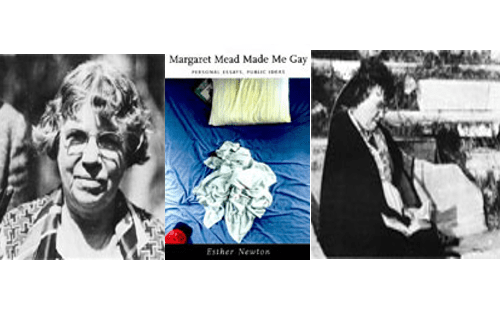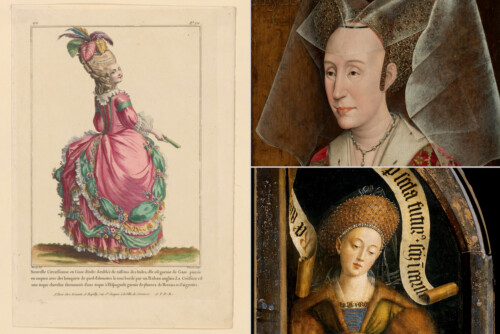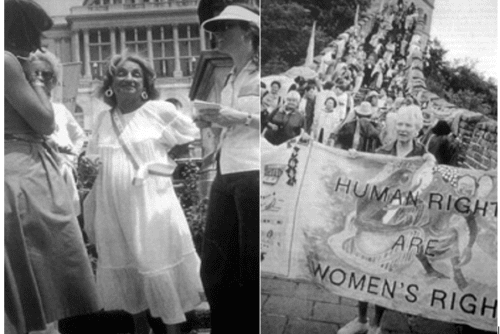My last clip is from an extraordinary 20-minute film, Trance & Dance in Bali, which is probably the one that has been seen the most. It is, indeed, to my mind, the most exemplary of this capacity of film to outlive the discursive constraints of its production. Partly it’s because it was filmed with Jane Belo, who was herself a Barnard graduate. She came to Mead in 1934 when she was living in an ex-patriate artists’ community in Bali. She showed Mead some “trance” films, and that actually is what launched the project to Bali. Eventually, it became a comparative project, looking at trancelike behavior cross-culturally. What intrigued Mead and Bateson was that, in our society, trance behavior that is regarded as normal or sacred in Bali might be considered an expression of schizophrenia. But that’s another story.
This film is quite interesting; it was shot at two performances. It was actually commissioned for Mead’s 36th birthday (December 16, 1937). It’s anything but authentic in that sense of occurring without provocation on the part of the anthropologist. It was a combination of two performances of the “Ronda/ Witch Play” and the “Barong kris Dance,” which had been put together for tourist production. I’m going to show a short clip from that. It’s an extraordinary moment in the film that I always find very riveting, and it leaps out at the audience from all the constraints of the film’s structure. You see in that moment the kind of tensions and contradictions between the soundtrack and Mead’s discursive and analytical presence, and the other “order” of epistemology. In a sense, the eruption of the unconscious onto the plane of the film has actually given this film a second life within the avant garde film world. It’s recently been written about as ecstatic ethnography. I’m going to end with this, because I think that’s a fitting, if unsettling, way to think about Mead’s work.
The clip is from a sequence at the end of the ceremony, and focuses on an older woman who unwittingly went into a trance during the ceremony. She wasn’t one of the dancers, but Mead picked up on her. The woman is trying to pull herself out of the trance.
FILM SOUNDTRACK (MEAD): “Here is an old woman, ‘unwilling’ to come back to herself, ‘remembering her death’ — until finally the priest brings special offerings to the spirit that possesses her, to persuade it to leave her body. The priest makes his offering of flowers and [ ? ] — on the ground — while she continues to dance [ ? ] — At last, she holds out her hands for the holy water, a sign she is willing to come out of the trance.”
In conclusion, looking back at her work in visual anthropology, Mead has been a formative influence. There is a strange irony. This notable project was carried out with Gregory Bateson in Bali, and then in Papua New Guinea, beginning in 1936. It was an extraordinary effort to use film and photography in the field, and the precursor to much of the visual anthropology that has gone on since then. However, the project itself did not have an enduring impact. But Mead’s sense of what film could do as a research tool that could outlive its paradigmatic constraints was prescient of the circulation and significance of media in cultural lives worldwide, in the present, and of the transformed in which we now do our work.




